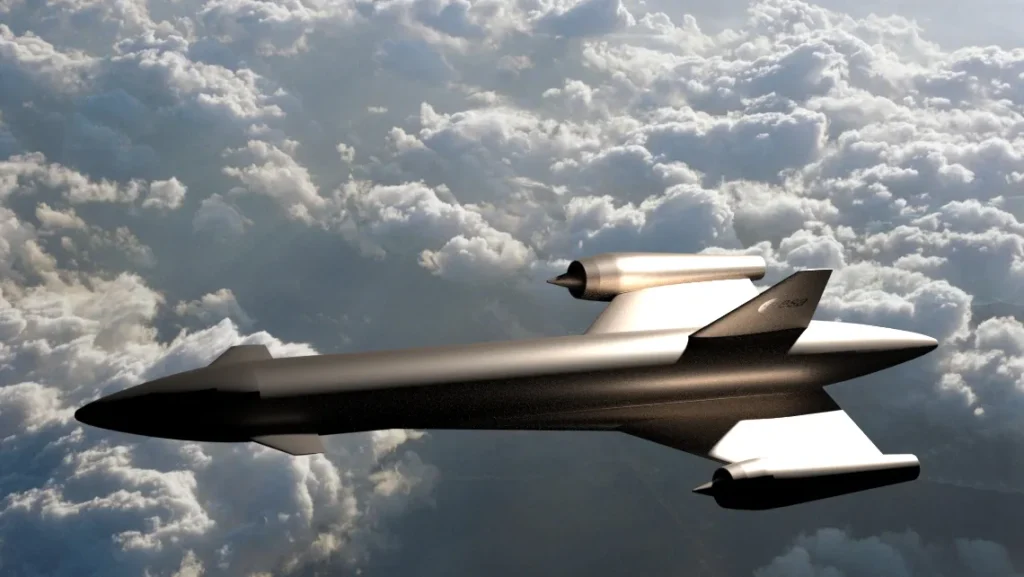For a decade after the Space Shuttle bowed out, space planes felt like museum pieces. Now they are back in the conversation. The European Space Agency has funded Invictus, a hypersonic space plane concept led by U.K. engineering consultancy Frazer-Nash that targets Mach 5 and a London to New York hop in roughly 60 minutes. The brief is crisp: deliver a viable concept inside 12 months, then a working aircraft by 2031.
The design draws on technology with unusually strong roots. Invictus plans to use the pre-cooler from SABRE, the air-breathing rocket engine developed by Reaction Engines, the British firm behind Skylon and, before that, the HOTOL concept. Reaction Engines closed last year, but its core idea remains compelling. By chilling incoming air in a fraction of a second, the pre-cooler lets an engine ingest hypersonic flow that would otherwise be too hot to handle. Picture a frost-laced heat exchanger swallowing air that arrives scorching from shock heating, the temperature plummeting before combustion even begins.

That detail matters because it changes the mass equation. At lower altitudes the engine can pull oxygen from the air, which reduces the need to carry oxidizer. Higher up, the aircraft switches to liquid hydrogen. The result is a lighter vehicle with fewer compromises between airplane and rocket. This hybrid profile is why the team can talk about runway departures and orbital potential in the same breath, and why the promises around point-to-point travel do not sound like wishcasting. The physics is unforgiving, yet the enabling component has already been demonstrated on conventional jet engines.
If you have lost track of space planes, you are not alone. The field has been a patchwork of military testbeds and ambitious startups. The U.S. Air Force’s robotic X-37B continues to circle quietly. China has flown a similar vehicle known as Shelong. On the civil side, Sierra Space’s Dream Chaser, Radian Aerospace’s concept and Dawn Aerospace’s Aurora have kept the category alive, while Virgin Galactic’s Delta-class vehicle remains in the queue. ESA’s move shifts the center of gravity. It is a public program with a specific schedule, a defined architecture and the credibility that comes from inheriting a rare piece of proven hypersonic hardware.
What would it feel like for the traveler if Invictus gets there? The experience will be more capsule than cabin, at least in the early years. Expect sparse interiors, high strap-in moments and views where the blue fades to indigo as the aircraft climbs into thin air. On the ground, the appeal is obvious. Breakfast in Mayfair, a late morning meeting in Midtown, the sort of day that currently requires an overnight and a tolerance for stale air and cabin grime. At Mach 5, the soundtrack changes to a contained hiss and the distant rumble of systems working hard, not the usual turbofan thrum.
There are caveats. Materials and thermal protection need to survive repeated shock heating. Hydrogen supply and handling on an airport ramp is an infrastructure puzzle, even as the fuel’s emissions profile looks promising at the point of use. Certification frameworks for vehicles that operate like both aircraft and rockets are still being written. Overland sonic boom restrictions remain a political and acoustic issue, even if much of the flight profile takes place at very high altitude or over water. None of this is disqualifying, but it is the difference between an artist’s rendering and a timetable.
The larger cultural note is this. Supersonic business travel has long been the default fantasy for modern men who value time more than almost anything. Invictus reframes that wish through a European lens and a cooler engineering narrative. It is not chasing Instagram glamour. It is trying to make a hard problem tractable with an elegant piece of kit that chills air so quickly it feels like sleight of hand.
If Frazer-Nash and ESA hit their interim target next year and keep the 2031 horizon in sight, the transatlantic will be more than a corridor. It will be a sprint. That is not hype. It is a clear statement of intent built on hardware that already does the most difficult thing in hypersonics, turning burning wind into something an engine can drink.
Read more news here.